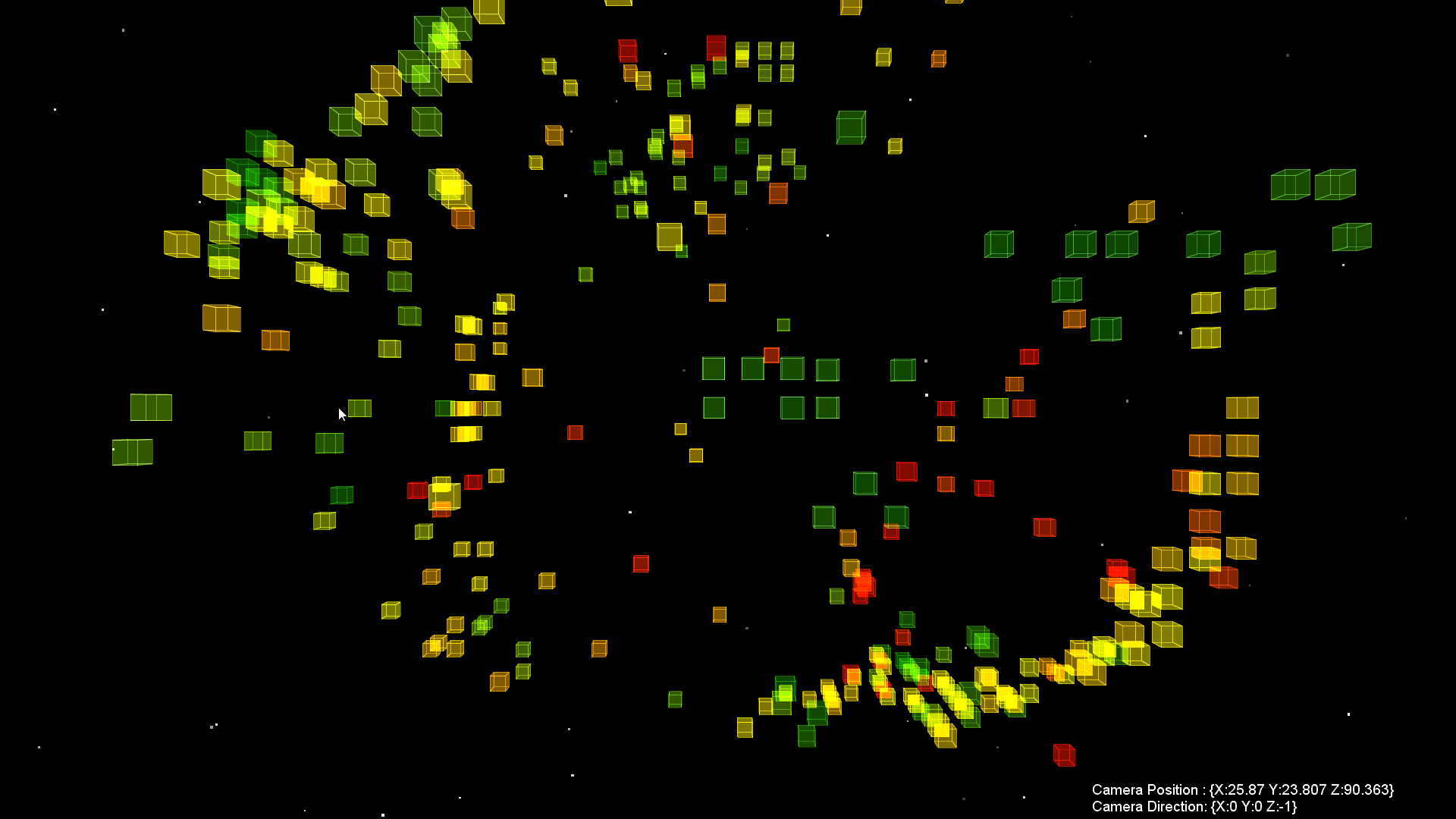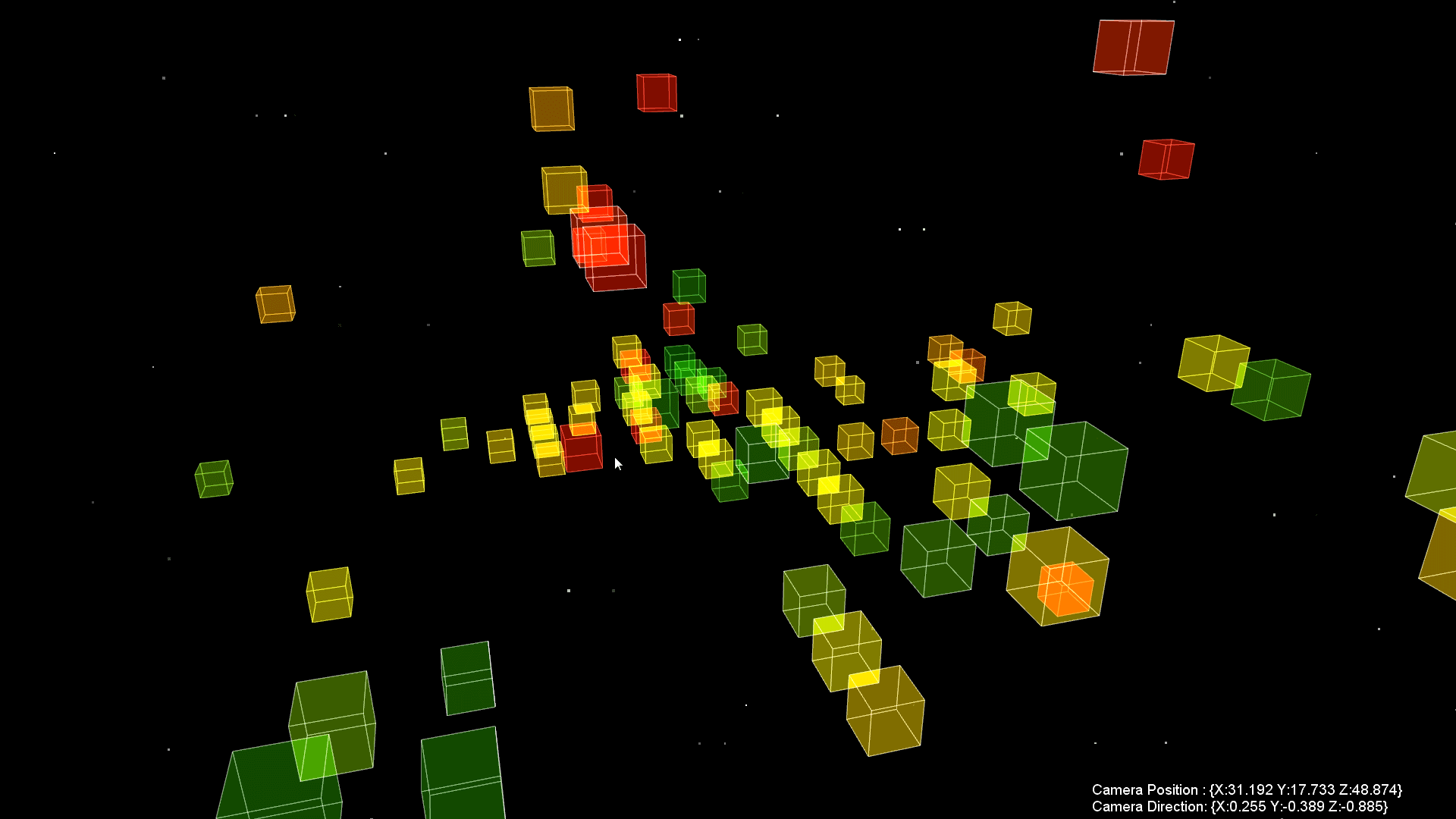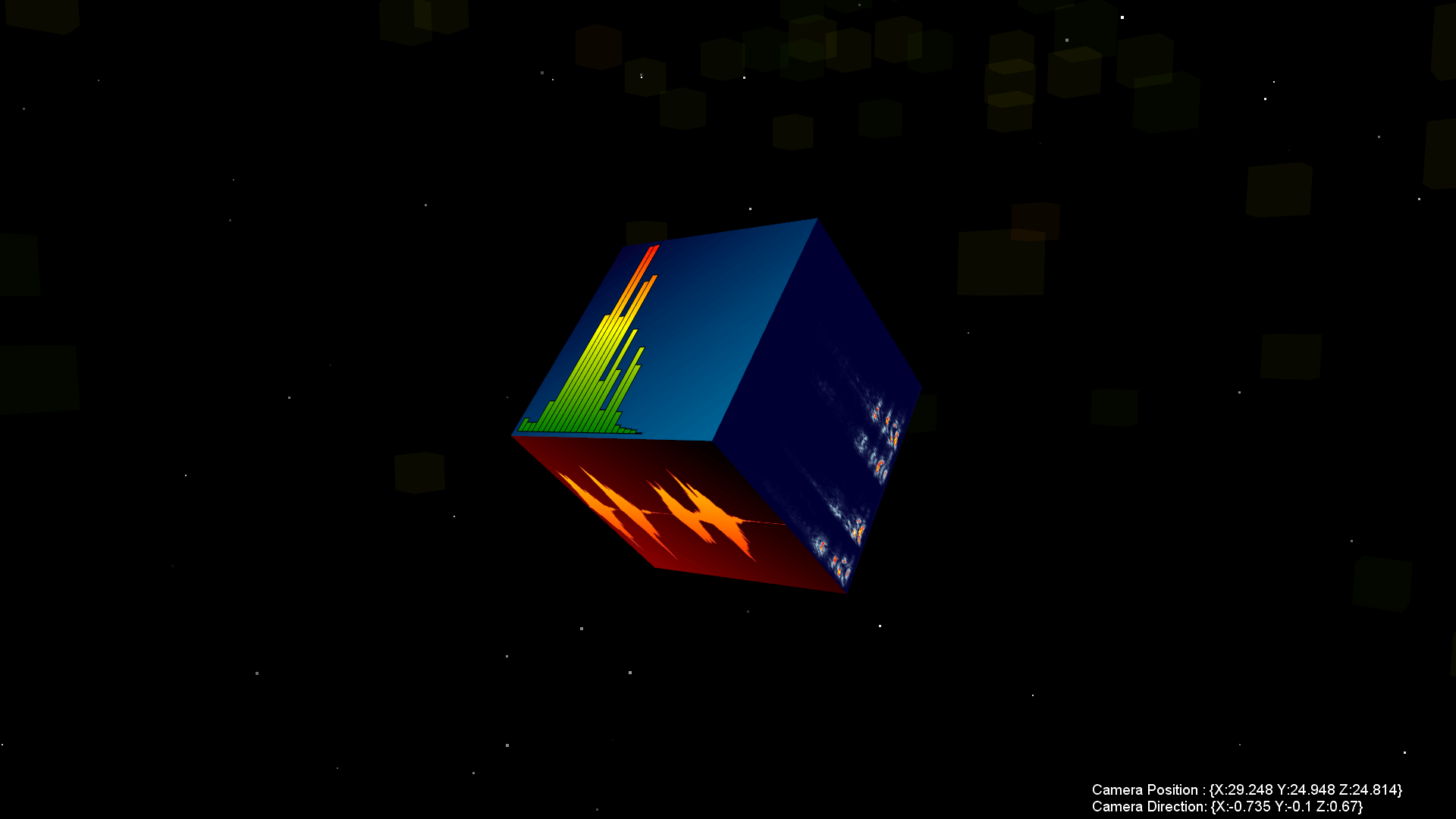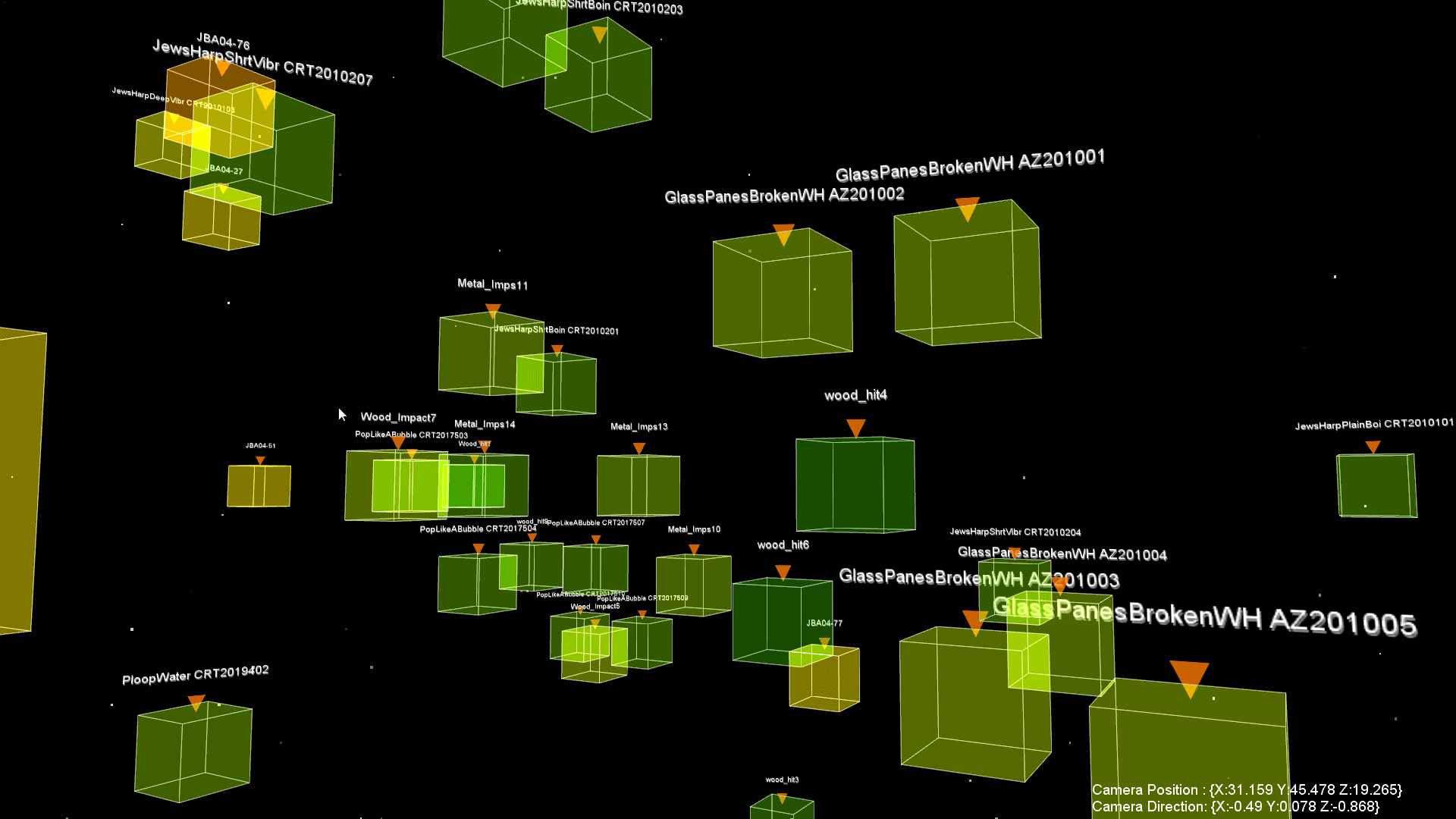
DataSpace

Smart Asset Management
With the exponential growth of data, smarter ways to organize and explore large collections of files are needed.
Using state-of-the-art techniques in digital signal processing and in artificial intelligence, tsugi DataSpace
analyzes your assets – sounds, pictures or texts –, organizes them with a neural network, and lets you browse
them in a 3D world.
Because they are classified based on their perceptual features, similar assets will
appear close to each other.
New Creative Options
Using DataSpace, sound designers can easily find similarly sounding – yet different – waveforms to layer.
It becomes suddenly obvious that monkey screams can sound a lot like screeching tires, or that a rolling
stone and a breathing dragon sound effects share many characteristics.
Pictures with similar shapes
and colors, or texts using the same vocabulary or syntax will also appear close to each other.
Asset Features
Each cube floating in the 3D world represents a different file. Selecting a cube will display the corresponding
picture or text, or play the related sound.
Picking up the cube and rotating it will show a different
representation of the data on each face, for example the waveform, spectrogram or pitch envelope of
a sound.
Tsugi's DataSpace offers other navigation features such as a map of the 3D world and placemarks
to which you can jump instantly.
User Control
In addition to the mouse, gesture controllers such as Microsoft’s Kinect and the Leap from LeapMotion can
be used.
Browsing assets becomes even easier and more engaging.
Applications range from interactive
installations in museums to the cataloguing of songs for radio stations, or finding books in a library.
Game studios dealing with a lot of sound effects and graphic assets will also greatly benefit from Tsugi's
DataSpace.














